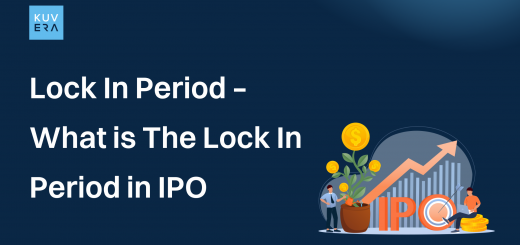Investors seek out investment options that can help them grow their wealth, receive consistent returns, and/or reduce their tax liability. While there are several investment programs on the market, many of them give returns that are taxed in accordance with income tax regulations. ELSS funds come into play in this situation. ELSS Funds, also known as Equity Linked Savings Scheme Funds, are tax-saving equity mutual funds. In this article, we’ll examine ELSS tax-saving mutual funds and discuss everything investors need to know about them.
What is an ELSS Fund?
ELSS funds are equity funds that invest the majority of their corpus in equities and equity-related instruments. ELSS funds are also known as tax saving schemes since they provide a tax exemption of up to Rs. 1,50,000 from the annual taxable income under Section 80C of the Income Tax Act.
An ELSS mutual fund is, as its name implies, an equity-oriented scheme with a three-year lock-in period. In recent years, many taxpayers have used ELSS schemes to take advantage of tax benefits. If people invest in ELSS schemes, up to Rs. 1,50,000 of the investment amount is exempt from taxation. Furthermore, the income earned under this scheme at the end of the three-year period will be considered long-term capital gains (LTCG) and will be taxed at a rate of 10% (if the income is above Rs. 1 lakh).
Advantages of ELSS Mutual Funds
-
ELSS Mutual Funds Offer Tax Benefits
ELSS is an excellent investment option, primarily because it offers tax advantages. Under Section 80C of the Income Tax Act of 1961, investments in ELSS up to Rs. 1.5 lakh per year are eligible for a tax deduction. However, there is no maximum investment amount in ELSS because investors are free to deposit whatever amount they want. Investments over Rs. 1.5 lakh are not eligible for tax benefits.
-
Lock-in Period
The ELSS investment has a three-year lock-in period. The lock-in period helps with earnings reinvestment and balances of the initial volatility linked to stock investments. One should be aware, though, that the lock-in period begins on the day of purchase.
As an illustration, suppose that on July 31, 2019, you invest Rs. 1000 in a single lump sum and receive 100 units. After that, the lock-in period will end on July 30, 2022.
However, if someone makes monthly ELSS SIP investments, such as 10 units on July 31, 2019, 10 units on August 31, 2019, and so on. The lock-in term will thereafter end on July 30, 2022, for the first 10 units, on August 30, 2022, for the second 10 units, and so on.
-
Lump Sum or SIP
There are two ways to invest in ELSS. If someone has a steady source of income, they may invest monthly through SIP. Otherwise, people can pay a single lump sum to invest in ELSS if they have extra money. With a SIP, one can invest as little as Rs. 500 each month in ELSS.
-
Major Investment In Equity
The ELSS pooled funds invest in equity and equity-related securities in order to generate returns. Compared to debt, bonds, or money market instruments like certificates of deposit (CDs), Treasury bills, etc., equity instruments are riskier. Before making an equity investment, one should also evaluate their risk tolerance. While equity can be volatile in the short term, it may offer better returns over the long run. Similarly, investment in ELSS may also result in higher returns.
-
Tax on Returns
Not all gains from ELSS investments are tax-free. Gains from ELSS investments are considered long-term capital gains (LTCG), and any gains over Rs. 1 lakh are subject to a 10% tax rate.
-
High Returns
Compared to other tax-saving investments like PPF and NPS, top ELSS funds may have the potential to generate higher returns. These high returns are generally the result of the risk taken by fund houses when they invested in equities. Some of the top ELSS funds also invest in mid-cap companies. When compared to funds that primarily invest in large-cap firms, these funds may produce larger returns. When compared to other funds, the risk attached to these funds is higher.
-
No Upper Limit
The amount an investor can put into ELSS funds has no upper limit.
-
Professional Management
Mutual funds for ELSS are managed by qualified fund managers. As a result, even an investor with limited or no market understanding may earn the best returns by investing in the top ELSS mutual funds. In comparison to other traditional tax saving strategies, the professional management service aids investors in obtaining higher returns.
How Do You Redeem Your ELSS Investments?
There are two ways to invest in an ELSS fund. The SIP route is one method, and the lump sum method is another. Depending on how people invest, the method for redeeming the investments will vary. Let’s first examine the ELSS SIP investment & lumpsum redemption process.
-
Redeeming Lump Sum Investments From ELSS
The lock-in period is determined from the day the purchase is made when people invest a lump sum in an ELSS. Therefore, investors can only sell the units of an ELSS fund three years after the date of their initial investment.
Let’s use an illustration to better understand.
Let’s say you invest a lump sum of Rs. 75,000 on September 10, 2022, in an ELSS scheme. After three years, or on September 11, 2025, when the lock-in period expires, you can redeem all of your ELSS units at once.
There are two ways to redeem the ELSS lump sum investments. One is to submit a request online by signing into the mutual fund website and doing so. Similarly, if users completed the transaction through an app, they can redeem the funds with the same app. Second, a redemption request can be made by filling out a form at the local branch of a mutual fund. The fund house’s website provides information about the nearest branch.
However, because each instalment is treated as a separate investment in SIPs, the redemption process is a little more complicated.
-
Redeeming ELSS SIP Investment:
Investors can use the Systematic Investment Plan (SIP) to invest small amounts and buy ELSS fund units on a regular basis. As a result, SIP allows investors to pick the frequency of the investments, which can be monthly, quarterly, half-yearly, or annually. In contrast to the lump sum approach, however, redeeming these funds can be somewhat complex. Each SIP instalment has a 3-year lock-in period since each instalment is viewed as a fresh investment. Thus, the lock-in period’s calculation begins on the day the units are assigned.
The SIP begins operating automatically, and units are bought at the NAV on the day of debit after the debit mandate has been set up with the bank. When investing through a SIP, the lock-in period is handled slightly differently. To help one comprehend, consider this illustration:
Consider that you begin a SIP investment in an ELSS fund. You decide to make Rs. 1000 in investments on a monthly basis. The following table lists your purchases and lock-in times:
| Date of Purchase | Lock-In Period Ends On |
| 01 Jan 2021 | 01 Jan 2024 |
| 01 Feb 2021 | 01 Feb 2024 |
| 01 Mar 2021 | 01 Mar 2024 |
| 01 Apr 2021 | 01 Apr 2024 |
| 01 May 2021 | 01 May 2024 |
How to Evaluate the Best ELSS Mutual Funds?
The benefits of investing in an ELSS mutual fund are appealing to any investor, but before investing, there are a few things to think about. The most crucial factor for any investor is to align their investment objectives with the mutual funds they have chosen. For the investment to be a good one, they must choose mutual funds that meet the goal. To make an informed decision, one must look at things like the fund’s past performance, returns, most recent NAV, exit load, and the fund manager’s portfolio performance.
- Fund Returns: Check to see if the fund has maintained consistency over the years by comparing its performance to that of its peers. One may invest in the ELSS funds based on these characteristics. But keep in mind that past results do not guarantee future success. Future returns are completely subject to the actions of the fund manager and fluctuations in the market.
- Fund History: One may Select fund companies with a track record of steady performance for at least five to ten years. The success of a fund is determined by the quality of the equities in its portfolio and its benchmark.
- Expense Ratio: The expense ratio represents the proportion of the investment that is allocated to fund management. Higher take-home returns result from having a lower expense ratio. So, if two funds have comparable histories and asset allocations, investors may pick the one with the lower expense ratio.
- Financial Ratios: Analyze the performance of a fund using several parameters such as Standard Deviation, Sharpe ratio, Sortino ratio, Alpha, and Beta. A fund that has a higher beta and standard deviation may be riskier than one that has a lower beta and standard deviation. Investors may choose funds with a higher Sharpe ratio because they may provide higher returns for the additional risk they entail. The fund manager plays a crucial role.
Tax Benefits
Under Section 80C of the Income Tax Act of 1961, ELSS funds qualify for tax deductions. This section states that investments in ELSS funds are eligible for an annual tax deduction of up to Rs. 1.5 lakh. But it’s crucial to keep in mind that the Rs. 1.5 lakh deduction applies to all Section 80C investments. Since there is a three-year lock-in period, the capital gains from investing in ELSS funds are long-term capital gains (LTCG). LTCG up to Rs. 1 lakh in a financial year is exempt from tax under the present tax laws.
Equity Linked Saving Schemes vs. Other Tax-Saving Investments
Today, there are numerous investment options that might reduce taxes. This includes, among others, the National Pension Scheme (NPS), Tax-Saving Fixed Deposits (FDs), Public Provident Fund (PPF), and National Savings Certificate (NSC). To demonstrate why the Equity Linked Savings Scheme may be one of the finest tax-saving options, here is a comparison between ELSS and the other tax-saving instruments.
| Investments | Lock-in period | Investment Risk |
| ELSS | 3 years | High |
| PPF | 15 years | Low |
| Tax Saving Fixed Deposits | 5 years | Low |
| NPS | Till retirement | Moderate |
| NSC | 5 years | Low |
The lock-in period for ELSS funds is comparatively the shortest, and they also have the ability to provide decent returns. They do, however, expose investors to more risk. However, this may be reduced by making long-term investments. By doing this, investors can spread their risk over a longer period of time and possibly enjoy higher returns.
Conclusion
ELSS Mutual Funds are among the greatest investing options because of their excellent returns and short lock-in period. The best part is the tax savings offered by the scheme.
Frequently Asked Questions (FAQs)
-
What are the features of ELSS Funds?
Now that we are clear on what ELSS funds are, let’s look at some of the characteristics that set them apart from other investment choices:
- Lock-in period: There is no upper limit on investment tenure. There is, however, a required three-year lock-in period that you must take into account. During these three years, you are not permitted to withdraw your money.
- Diversified investment: A minimum of 80% of your total capital is placed in equities and equity-oriented instruments after careful examination, while the remaining 20% may be invested in debt and hybrid funds. The risks connected with equity investments are reduced thanks to this diversification.
- Professional management: Like all mutual funds, ELSS investments are managed by experienced professionals with years of fund management experience. Your investment is in good hands because such managers have a sufficient understanding of the fund’s historical performance.
- Investment options: You can invest in ELSS funds in one of two ways: with a lump sum or through a Systematic Investment Plan (SIP).
-
What should I take into account before investing in ELSS funds?
Before you invest in ELSS funds, keep the following things in mind:
- Equity exposure: ELSS Funds provide sufficient equity exposure. This may allow you to earn larger profits. Additionally, it avoids rash selling decisions.
- Lock-in period: The mandatory lock-in period for ELSS Funds is three years. You cannot take a hasty exit from the investment. The ELSS SIP investment must also adhere to the minimum lock-in regulation, which states that each instalment must be treated as a distinct investment with a three-year lock-in period.
- Risk factor: In contrast to other traditional investment options, ELSS Mutual Funds do not provide guaranteed returns and are totally vulnerable to market fluctuations. ELSS SIP investment may be taken into account if you have a mid to high-risk tolerance.
Interested in how we think about the markets?
Read More: Zen And The Art Of Investing
Watch/hear on YouTube:
Start investing through a platform that brings goal planning and investing to your fingertips. Visit kuvera.in to discover Direct Plans and start investing today.











